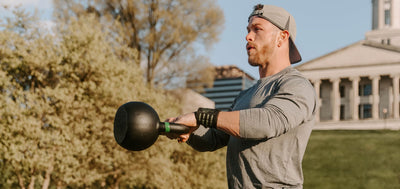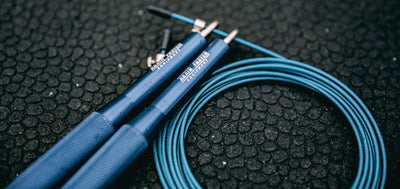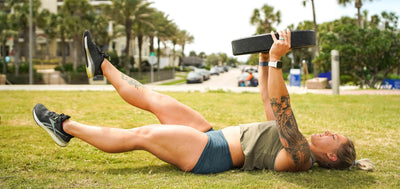CALVES & ANKLES
Foam rolling for your calves and ankles is useful for runners, those who do box jumps, double-unders, and even those who want to improve their squat and main lifts.
Here's a step-by-step guide on foam rolling your calves and ankles:
- Place the foam roller on the ground, and position the leg you're working on over the roller, right above the Achilles tendon and above the ankle and heel.
- Plant your hands on the ground beside you for support and begin slowly rolling back and forth over the roller, searching for tight or sore spots.
- When you find a problem area, focus on it by rolling gently back and forth to help release tension.
- For added pressure, cross your free leg over the one on the roller. You can even lift your hips off the ground for even more pressure if needed.
- Be sure to roll the entire calf area, but avoid going directly behind the knee or onto the shin bone. Pay attention to the soft tissue in between.
- You can also roll the side of your calf to help alleviate shin splints or other issues related to jump roping or plantar fasciitis.
- Spend about 60 seconds to 1.5 minutes on each side, and then switch to the other leg and repeat the process.
Be gentle and patient with yourself as you foam roll, and make sure to focus on any tight or sore spots you find. Foam rolling can be an excellent addition to your workout routine, helping to reduce muscle soreness and improve mobility. Remember to always listen to your body and adjust the pressure accordingly to avoid discomfort or injury.













































